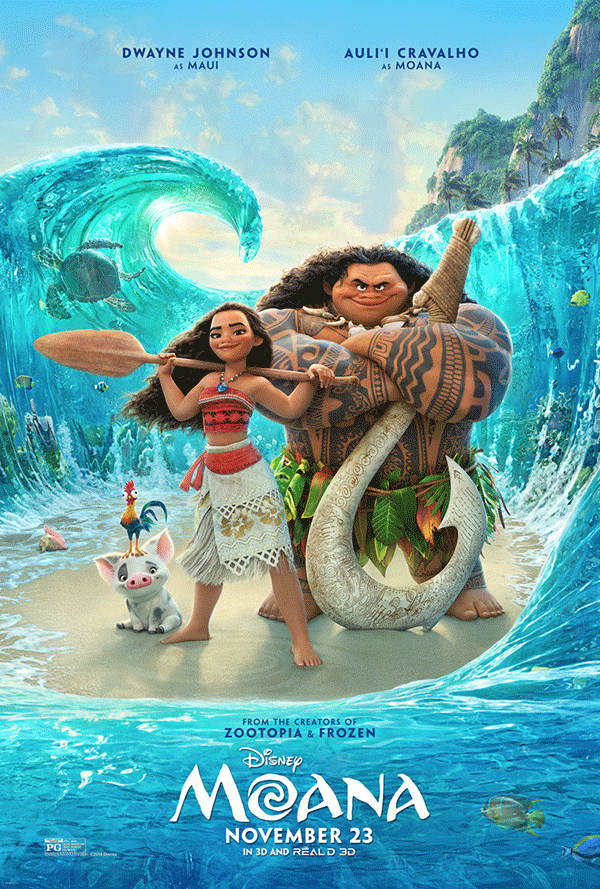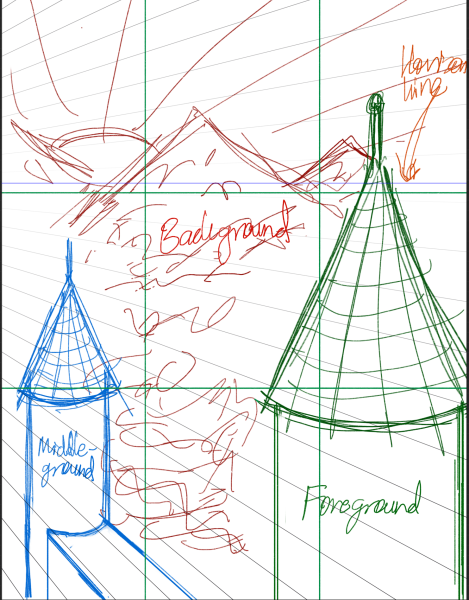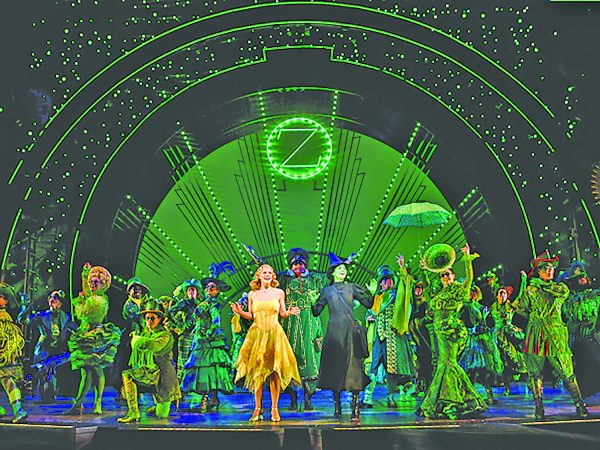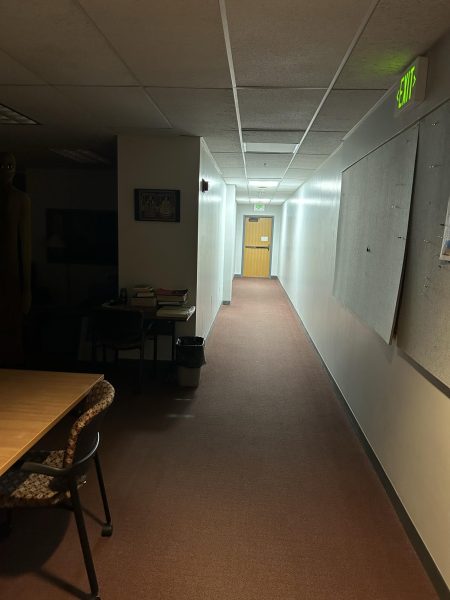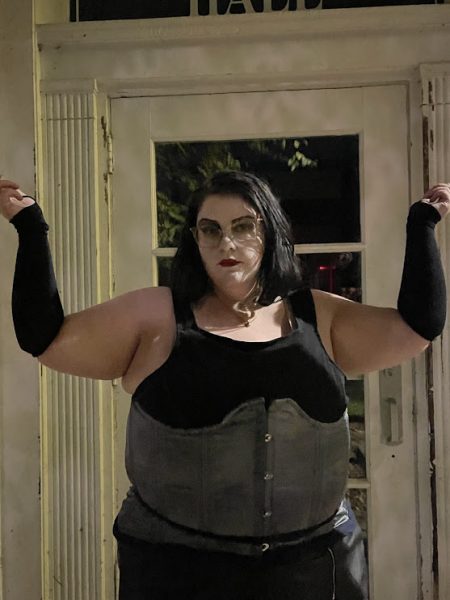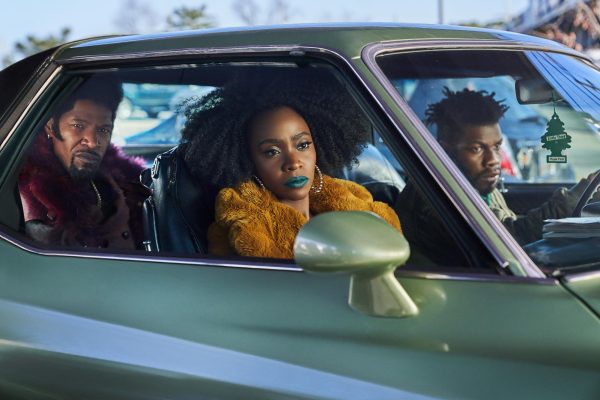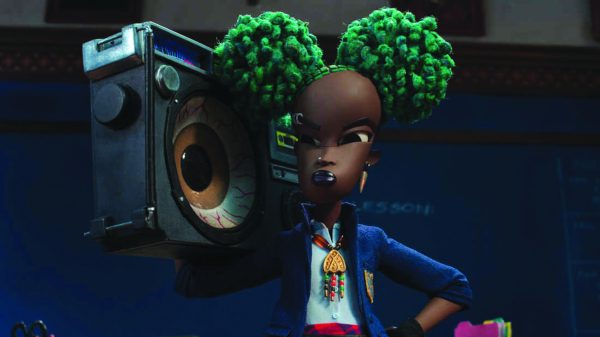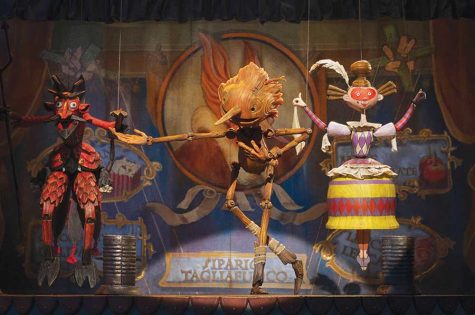A new kind of Disney princess
Disney princess movies have followed a fairly standard formula for nearly 80 years, usually based on a fairy tale and including a prince in some capacity. November’s “Moana” broke that pattern with style, delivering stunning visuals and a riveting plot.
Directed by Ron Clements and John Musker (“Aladdin,” “The Little Mermaid,” “The Princess and the Frog”), Disney’s newest animated film looked to Polynesian mythology for its inspiration.
Moana, the film’s titular character, is the daughter of the chief of Motunui, a small Polynesian island invented for the movie. Although her father is training her to be chief for when her time comes to take up the mantle, her wanderlust pushes her to explore the ocean beyond “the reef,” despite her community’s ban on traveling to the treacherous waters beyond.
When the crops and fish of the island start dying, however, Moana is tasked by the ocean to find the demigod Maui and make him return the heart of the island goddess Te Fiti, which he stole many generations earlier, in order to mend the darkness spreading across the islands.
This blight of darkness seems to be Disney’s answer to the historical question of “The Long Pause,” a nearly 2000-year period in South Pacific history between the discovery and settlement of the Western and Eastern Polynesian islands. According to “Moana,” the ancient Polynesians stopped exploring because the loss of their goddess caused the oceans to become incredibly dangerous.
With respect for the film’s cultural roots, all members of the cast were of some Pacific Island descent, the only exception being Alan Tudyk in his non-speaking bit part role as Heihei the oblivious rooster.
Although a newcomer to the world of film, Auli’i Cravalho brought expressive emotion and a powerful voice to the lead character. Moana’s journey of self-discovery felt independent and genuine, and each unexpected obstacle showed a new strength in the character.
Maui (Dwayne Johnson) acted as the catalyst for many of these moments of discovery, initially as the obstacle itself and later as her support. His own personal struggles gave him a sympathetic side, while his bluster and aggravated interactions with Heihei provided much of the movie’s comedic spark.
Disney rarely disappoints with its animation, but “Moana” raised the bar a little higher. The vibrant greens of Motunui and intricate details of the traditional ships and drums provided a beautiful backdrop for the characters, but the highest beauty of the film was the ocean. Magnificently animated, it sparkled with life and energy and added extra splendor to the movie’s wider shots.
“Moana” stands out from other animated Disney films with its design of the main character. Unlike the Disney princesses before her, Moana is not delicate. Her strong legs and shoulders indicate an appropriate genealogy and an active lifestyle.
It would be remiss to talk about a Disney movie without discussing the soundtrack. Written by Opetaia Foa’i, Mark Mancina and Lin-Manuel Miranda, the songs in “Moana” drove the movie forward with sweeping vocals and culturally-inspired music to back them.
“We Know the Way” swelled up to meet the beautiful animation and momentum of one of the film’s most powerful scenes, while “How Far I’ll Go” displayed Cravalho’s vocal talent and pushed the movie into action.
The film’s other big number, “You’re Welcome,” was a fairly groovy track in its own right and a very fun way to introduce Maui but felt a little out of place among the more traditional, drum-heavy songs that filled the rest of the soundtrack.
The film encountered some backlash for its use of Polynesian culture. Before the movie’s release, many people were justifiably worried about another Disney attempt to portray non-white culture. Luckily, they approached “Moana” with significantly more tact, research and cultural sensitivity than some of their past cultural missteps. Musker and Clements spent time in the Pacific Islands as research for the film and even put together an “Oceanic Story Trust,” made up of people knowledgeable about the culture, to alert them to any potential issues with the story or characters.
Although not perfect — critics have leveled some justified complaints at the film since its release — “Moana” got a lot right. The story is captivating (and unexpectedly heartbreaking), the animation is gorgeous, the music is powerful, the humor is funny and the characters are loveable. Despite its problems, “Moana” is a much-needed splash of diversity in our popular culture while also being wonderful and entertaining.


